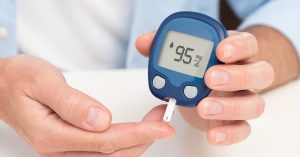
The global medical electronics industry is experiencing rapid growth, with a compound annual growth rate (CAGR) of 6.7%. With this growth there is a greater demand for building more intelligence into medical electronics products in a variety of applications, including diagnostic, therapeutic and rehabilitation devices as well as creating smart healthcare solutions for electronic medical records.
The application of new technologies, such as 5G and the Internet of Things (IoT), is improving the functionality and efficiency of these medical devices, enhancing their diagnostic and treatment capabilities. Technological advancements are also driving innovation in the medical electronics industry, particularly in the integration of big data and artificial intelligence (AI), ushering in the era of smart healthcare.
With this new technology comes the need for greater operating precision of medical electronic devices; for example, devices that are used during life-saving surgeries to ensure accurate diagnoses and to help deliver the best treatment possible.
One of the most important and common factors in each of these devices is frequency control. Medical devices depend on accurate timing and synchronization to deliver consistent and reliable results. Factors like temperature variations, electromagnetic interference, as well as power fluctuations can oftentimes impact the device operating stability. When this happens, having accurate frequency control becomes complex. Several industry trends also enhance the need for tight frequency control:
Using high-quality crystals and oscillators in the design of medical devices helps to ensure the reliability of frequency control. Aker’s crystal and oscillator products have been successfully integrated into a wide range of smart healthcare and medical electronics devices, including glucose meters, capsule endoscopes, medical device power controllers, medical endoscopes, cardiopulmonary assist medical devices, blood pressure and oxygen monitors, medical touchscreen displays, sleep monitoring systems, medical wearables, medical tablets, medical air mattresses, and external radiation therapy equipment. With a comprehensive product portfolio ranging from 7050 to 1612 SMD sizes, Aker is poised to meet the diverse application needs of the medical electronics industry.
| Categories | Model | Dimension (mm) |
|---|---|---|
| XTAL • SMD | C7S, C6S, C5S, C4S, C3E, C2E, C1E, C16 | 7.0×5.0, 6.0×3.5, 5.0×3.2, 4.0×2.5, 3.2×2.5, 2.5×2.0, 2.0×1.6, 1.6×1.2 |
| XO • HCMOS | S7, S5, S3, S2, S1 | 7.0×5.0, 5.0×3.2, 3.2×2.5, 2.5×2.0, 2.0×1.6 |